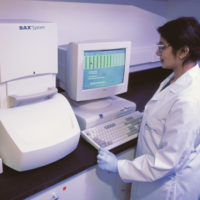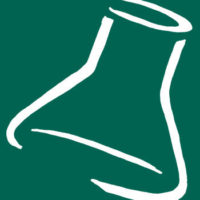The New Blue Plate Special: Advances in Chromogenic Media

When Lissa Gilliam, Quality Assurance Supervisor with Dynamic Foods, orders up a blue plate special, she doesn't necessarily mean what's on the menu at the cafeteria chain the company supplies. She may be referring to an advanced chromogenic culture media plate.
The Lubbock, TX-based food manufacturer uses Bio-Rad Laboratories' RAPID'L.mono in its in-house laboratory as a secondary confirmation method for the identification of Listeria monocytogenes. If L. monocytogenes is present in a sample, the colony will appear blue in color on the chromogenic media plate. "If we receive a presumptive positive for Listeria monocytogenes, we conduct secondary confirmation tests," says Gilliam. "We set up an AOAC-approved identification method and, at the same time, we also streak the RAPID'L.mono plate. What this does is give us peace of mind because within 24 hours we can be certain to a high degree that we either are or aren't dealing with Listeria monocytogenes, whereas confirmatory results from the AOAC-approved identification method might take five to six days for confirmation after a presumptive."
For Dynamic Foods, which operates a bakery, a red meat processing department and a cooked foods plant that produces assorted sauces, gravies, non-meat casseroles, puddings, pie fillings and assorted ready-to-cook and ready-to-heat items all in one facility, the difference between 24 hours and five days is extremely important. In addition to the cafeteria chain, Dynamic Foods also boasts vigorous outside sales of custom products for foodservice and retail outlets, making approximately 250 food products in total, which translates into 200 to 250 independent product samples each month for testing in the company's in-house laboratory, says Gilliam.
"We try to fill custom orders as quickly as we can while taking care of our cafeteria chain orders and that means we try to get the fastest turnaround time possible for our customers while maintaining high standards of quality and safety. With the high volume of production at the plant and our company's commitment to testing product for Listeria to get the most information on our products before shipping them, turnaround time becomes an even bigger issue. Being able to use a chromogenic media that so rapidly and clearly differentiates L. monocytogenes from non-target organisms helps us to achieve both of these goals," she adds.
Seeing the Difference Makes the Difference
The development of selective chromogenic media is arguably one of the first rapid microbiological methods developed for use in the food industry, notes Brad Crutchfield, Vice President, Life Sciences with Bio-Rad Laboratories, a leader in life science and clinical diagnostic products. In essence, a chromogenic medium is based on classical culture microbiology, only without the wait.
"The demand is for a faster way to accurately identify organisms. In food processing environments, the requirement is for rapid, positive identification of a pathogen. This adds value to a negative test result, creating a high level of assurance in releasing a safe and wholesome product. At the same time, many microbiologists still like to see colonies on the plate, but recognize that the standard culture method, although highly accurate, does not fit into a modern food processing environment where time is more highly valued than ever. A selective chromogenic medium not only offers the food microbiologist a way to reduce the time between test result and product release, but ensures that the target organisms are not positively identified."
The principle of chromogenics is very simple: The agar contains a substrate, or chemical that is specific to certain organisms. Bacteria streaked onto this medium will either use or not use this chemical based on the organism's biochemical pathways, causing an enzymatic reaction signified by a color change of the bacteria or colony. For example, the RAPID'L.Mono medium relies on the specific detection of phospholipase of L. monocytogenes and on the inability of this species to metabolize xylose. After a 24- to 48-hour incubation, Listeria monocytogenes form characteristic blue colonies without a yellow halo. Colonies formed by other species of Listeria are white, with or without a yellow halo.
The ability to differentiate the target organism so clearly is where chromogenic media really shines. "The usefulness of chromogenic media is that it reduces the the chance that the target pathogen will be missed because all of the other colonies on the plate look the same and you pick the wrong ones," says Crutchfield.
Gilliam adds that her company is eagerly anticipating the AOAC approval of the method, noting that the Dynamic Foods laboratory continues to use the RAPID'L.mono as a secondary method alongside an AOAC International-approved method with "completely consistent results."
"When this receives approval, we will probably use it alone," she says. "It is a much improved method for us to use, primarily because of the reduced time it takes for set up and completion. The fact is, if you have a presumptive, the conventional identification test requires several additional enrichment steps to confirm the presence of the organism, which takes several days. Whereas with the Rapid'L.mono plate, once you get the presumptive, you can streak from the enrichment broth, and by the next morning know what you have."
Looking for a reprint of this article?
From high-res PDFs to custom plaques, order your copy today!








